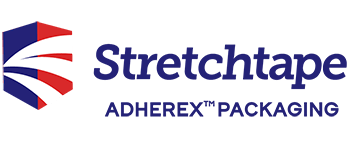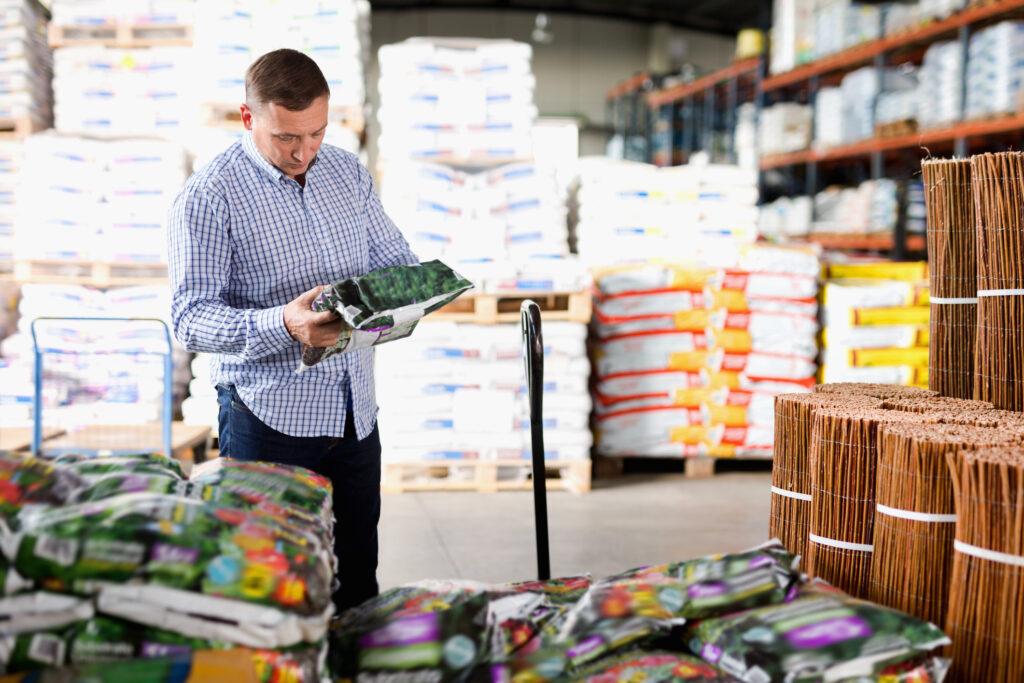Stretch film is used in packaging to secure goods during transportation and storage. It’s wrapped around pallets to hold boxes, furniture, and other fragile objects in place. Without stretch film, products can shift during transport or while stored in warehouses, resulting in damage or even total loss of the product.
While stretch film is a leading method to transport and store goods, it also offers companies opportunities to stand out from competitors. Branding is a massive part of a company’s bottom line, and printing designs on stretch film allows companies to place their identity on packaged materials. It’s an additional level of branding that can span across countries as goods are transported.
To get the most out of printed stretch film, companies need to know what questions to ask providers. We’ve compiled the five questions you should ask before moving forward with printed stretch film.
1. What type of printing do you offer?
Understanding the type of printing providers offer is key to securing a product that will work for your business. Companies can rely on the expertise of printed stretch film providers (more on that later) but having the basic groundwork in place will make these conversations easier and faster.
The three main types of printing include:
- Flexographic printing: This method uses a flexible relief plate that is attached to a rotating cylinder so that the design can be printed onto the film (think of a more modern version of a letterpress). It’s the most common printing type for labels and packaging. With its high versatility, flexographic printing is ideal for printing both large areas and smaller, finer details. Flexographic printing accommodates a wide range of designs, is relatively inexpensive, and is perfect for quick printing runs at medium to high volumes.
- Rotogravure printing: This type of printing engraves the desired image directly onto a roller. The image is then printed using a rotary printing press. It’s relatively inflexible, which makes it ideal for situations where there will be few changes to the design. It makes up for its inflexibility with speed, becoming the most economical high-volume run type of printing.
- Digital printing: The most modern option involves laser or inkjet printers, somewhat like the ones you might have at home. With digital, you get unlimited flexibility in print customization, allowing for changes on the fly. If you know designs will be changing often, this might be the right option for you.
2. Can I get a sample test for ink durability?
Newer presses can print on stretch film, linear low-density polyethylene (LLDPE), HDPE, and paper. However, the type of ink you choose can affect adhesion, readability, and durability, which can lead to smudging or flaking, making packaged materials less legible. Testing the ink adhesion will allow you to better understand if the bond between the ink and the surface is sufficient. Common ink choices include:
- Solvent-based ink has excellent adhesion properties, dries quickly, and provides good color intensity.
- UV-curable ink is cured with ultraviolet light to create fast-drying adhesion, high durability, and resistance to fading.
- Water-based ink is a good choice for printers focused on environmental impact when adhesion is not a priority.
- Low-migration ink is critical when packaging food to minimize transferring harmful substances to the packaging’s contents.
- Thermal transfer ink is made of wax, resin, or both and results in high-quality printing and durability.
You can manually test pressure-sensitive tape or use specialized mechanical equipment to perform further testing. Don’t be afraid to ask your printer for more information, as the wrong ink can lead to damage and loss of goods!
3. Is the film compatible with my printing needs?
Stretch film production varies between manufacturers, and different types of stretch film can be made from a wide selection of materials.
As a result, your choice of ink will depend on:
- The type of stretch film used: Stretch film is made of a variety of materials, which may require different types of ink. One ink may be compatible with a polyethylene-based stretch film, whereas another may be better suited to a polyvinyl chloride-based film.
- The printing method: Does your printing method use solvent-based or water-based inks? Perhaps both? It’s essential to understand the ink your printing method will require.
Always consult your supplier or printing equipment manufacturer to understand the best choice for your needs.
Learn more: 6 Tips to Avoid Pallet Wrap Breakage
4. What should I know to lock down a design?
As you work on a design, remember that each printing method will allow for a different number of colors. You may have heard of CMYK or RGB (Red, Green, Blue) color printing. Some printers will allow for ten colors or more. The amount of colors you’ll be able to use in your design will depend on this and will limit or expand your options.
Color is critical, as branding and identification are advantages provided by printed stretch film. A particularly colorful graphic may stand out during transport but may need to be more legible for warehouse operators. It’s an important balance to strike and can be informed by the type of printer used. Also, keep in mind that printers will require different artwork files, so check with the manufacturer to ensure you provide the printer with your artwork in the correct format.
5. What about compliance requirements?
When goods do not comply with regulations such as those set by the U.S. Food and Drug Administration (FDA), the result could be fines, product recalls, lost licensure, and even public outrage that harms a brand’s reputation.
Pay close attention to the goods your stretch film will be protecting before committing to printing designs onto the film. For instance, food items will have specific requirements, such as food-safe ink or information that must be displayed on the product. Check with the FDA or any state-level requirements to ensure you are compliant. If your goods are being transported internationally, ensure they comply with regulations from other countries or consult with legal experts to ensure everything meets all applicable laws.
Learn More: Cast vs. Blown Stretch Film: How do they Differ?
Rely on experts
Printed stretch film is an excellent way to protect packaged materials while capitalizing on branding and identification opportunities. It is a complex topic, with many considerations to make, from the type of ink used to the material of the stretch film.
Working with an experienced provider like Stretchtape will help clarify these topics. A knowledgeable provider will ensure compliance and industry standards. Rely on our expertise when deciding which ink to use or which printing method is suitable for your needs.
Contact an expert from our team online or call us at +1 216-486-9400.

